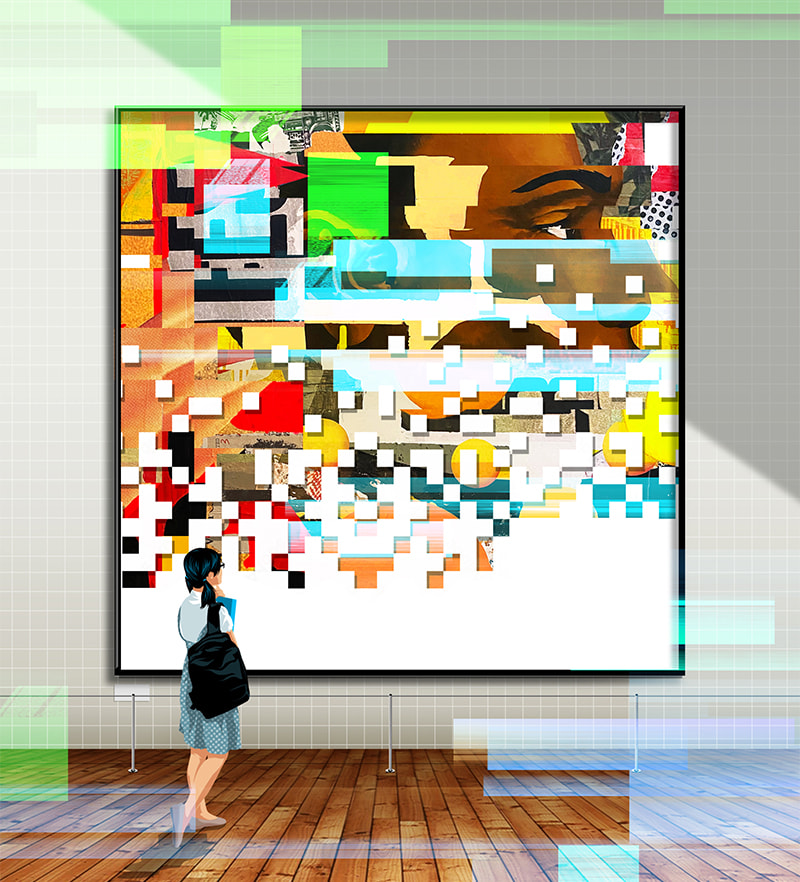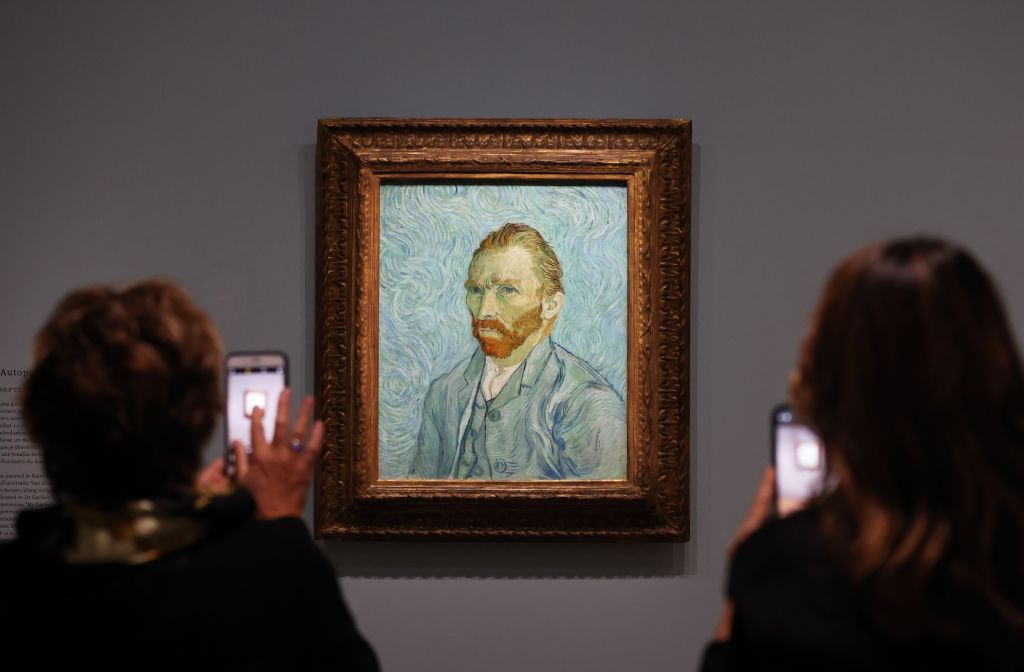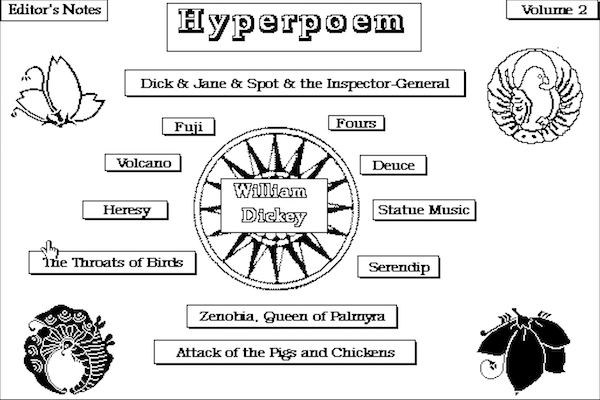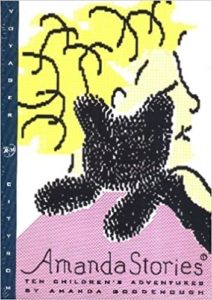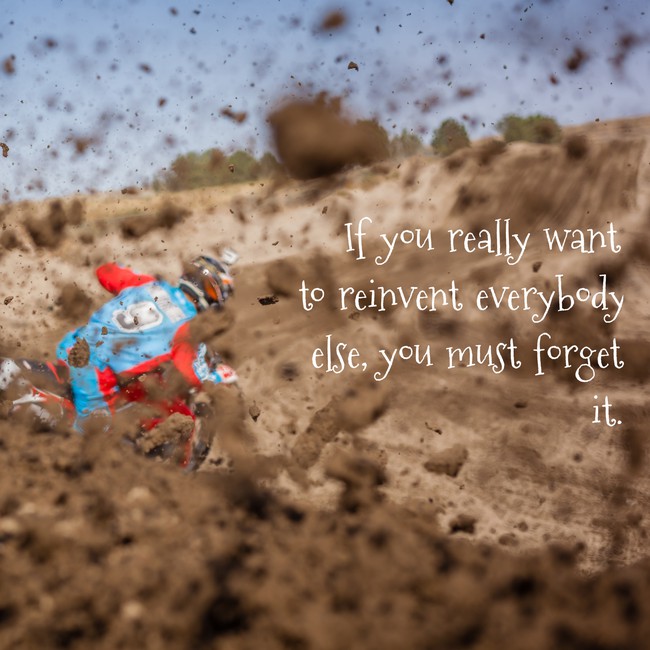In February I spent a month or so in India thanks to an invitation to participate in a workshop at IIT Delhi. We took the opportunity to take a trip around Rajasthan and I’ve now posted some of the better photos in a Flickr album. Enjoy!
Category: Digital and Interactive Art
Decker – A HyperCard for the Web
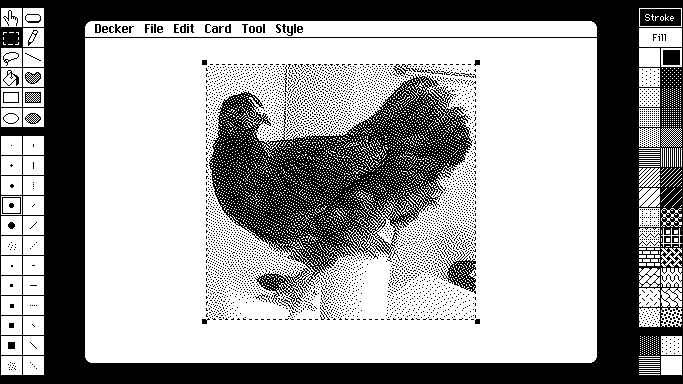
I’m at the CSDH-SCHN conference which is in Montreal. We have relocated to U de Montreal from McGill where Congress is taking place. Jason Boyd gave a paper about the Centre for Digital Humanities at TMU that he directs. He mentioned an authoring environment called Decker that recreates a deck/card based environment similar to what HyperCard was like.
Decker can be used to create visual novels, interactive texts, hypertexts, educational apps, and small games. It has a programming language related to Lua. It has simple graphics tools.
Decker looks really neat and seems to work within a browser as a HTML page. This mean that you can Save As a page and get the development environment locally. All the code and data in a page that can be forked or passed around.
As a lover of HyperCard I am thrilled to see something that replicates its spirit!
The Power of AI Is In Our Hands. What Do We Need to Know?
The Power of AI Is In Our Hands. What Do We Need to Know?
The New Trail has a great feature story by Lisa Szabo on generative AI, The Power of AI Is In Our Hands. What Do We Need to Know? The story features a number of us at U of Alberta talking about the generative AI tools like ChatGPT. It quotes me talking about art and how I believe we will still want art by humans despite what AIs can generate. Perhaps it would be more accurate to say that we will enjoy and consume both AI generated entertainment and art that we believe was generated by people we know.
Musée d’Orsay’s Van Gogh Exhibition Breaks Historic Attendance Record
The Musée d’Orsay set a record attendance of 793,556 visitors to its exhibition ‘Van Gogh in Auvers-sur-Oise’.
ARTnews has a story about how the Musée d’Orsay’s Van Gogh Exhibition Breaks Historic Attendance Record. The exhibit included a virtual reality component (Virtual Reality – Van Gogh’s Palette) where visitors could put on a headset and interact with the palette of Vincent van Gogh. You can see a 360 degree video of the experience here in French. It takes place in the room of Dr. Gachet who treated van Gogh. It starts with the piano at which his daughter Marguerite posed for a painting. Her character also narrates. Then you zoom in on a 3D rendered version of his palette where you hear about some of the paintings he did in the last 70 days of his life. They emerge from the palette.
It isn’t clear if the success of the show is due to the VR component or just the chance to see originals. We can only experience the 360 video which has limited interactivity. That said, I don’t find the video of the VR experience convincing. It is a creative documentary and it is hard to see how being immersed would make much of a difference. Was it just a gimmick to get more people to come to the show?
He Created the Katamari Games, but They’re Rolling On Without Him – The New York Times
The New York Times has a nice story about Keita Takahashi. He Created the Katamari Games, but They’re Rolling On Without Him. Like many Japanese game designers he gets no royalties and has little say in the future of the game associated with him, Katamari Damacy.
The game itself is collection game where you roll a ever growing ball of things that you might see in a typical Japanese house. The balls will allow a prince to rebuild the stars accidentally destroyed by his father, King of All Cosmos. (The image above is of Takahashi as the King.) Rachael Hutchinson has a chapter in her book Japanese Culture Through Videogames about the game and Japan.
Takahashi has a new game coming out soon, to a T.
Issues around AI text to art generators

A new art-generating AI system called Stable Diffusion can create convincing deepfakes, including of celebrities.
TechCrunch has a nice discussion of Deepfakes for all: Uncensored AI art model prompts ethics questions. The relatively sudden availability of AI text to art generators has provoked discussion on the ethics of creation and of large machine learning models. Here are some interesting links:
- Ars Technica has a article on how Artists begin selling AI-generated artwork on stock photography websites. I note that MidJourney generated images all seem to have a similar style. We may find it becomes more and more identifiable like some smell in the background.
- Ars Technica has another article on various projects to be able to see what original images might have been used in training AIs like MidJourney. Have AI image generators assimilated your art? New tool lets you check. The provenance of some of the training sets is documented here. It remains to be seen what you can do if your images have been used.
- And of course there are art groups that are banning AI generated art, Flooded with AI-generated images, some art communities ban them completely. This raises the question of whether one can tell?
It is worth identifying some of the potential issues:
- These art generating AIs may have violated copyright in scraping millions of images. Could artists whose work has been exploited sue for compensation?
- The AIs are black boxes that are hard to query. You can’t tell if copyrighted images were used.
- These AIs could change the economics of illustration. People who used to commission and pay for custom art for things like magazines, book covers, and posters, could start just using these AIs to save money. Just as Flickr changed the economics of photography, MidJourney could put commercial illustrators out of work.
- We could see a lot more “original” art in situations where before people could not afford it. Perhaps poster stores could offer to generate a custom image for you and print it. Get your portrait done as a cyberpunk astronaut.
- The AIs could reinforce visual bias in our visual literacy. Systems that always see Philosophers as old white guys with beards could limit our imagination of what could be.
- These could be used to create pornographic deepfakes with people’s faces on them or other toxic imagery.
Colorado artist used artificial intelligence program Midjourney to win first place
When Jason Allen submitted his “Théâtre D’opéra Spatial” into the Colorado State Fair’s fine arts competition last week, the sumptuous print was an immediate hit. It also marked a new milestone in the growth of artificial intelligence.
There has been a lot of comment about how a Colorado artist used artificial intelligence program Midjourney to win first place. This is seen as historic, but, as is pointed out in the Washington Post piece, people weren’t sure photography is an art. You could say that in both cases the art is in selection, not the image making that is taken over by a machine.
I can’t help thinking that an important part of art is the making. When I make art things they are amateurish and wouldn’t win any prizes, but I enjoy the making and improving at making. Having played with Midjourney it does have some of the pleasures of creating, but now the creation is through iteratively trying different combinations of words.
The New York Times has story about the win too, An A.I.-Generated Picture Won an Art Prize. Artists Aren’t Happy.
The Lost Digital Poems (and Erotica) of William H. Dickey
In 1987, William H. Dickey, a San Francisco poet who had won the prestigious Yale Younger Poets Award to launch his career and published nearly a dozen well-received books and chapbooks since, was …
Matthew Kirschenbaum has written a great essay on recovering early digital poetry, The Lost Digital Poems (and Erotica) of William H. Dickey ‹ Literary Hub. Dickey wrote some HyperPoems on HyperCard and so now they are hard to access. Kirschenbaum rescued them and worked with people to add them to the Internet Archive that has a HyperCard emulator. Here is what Kirschenbaum says,
Dickey’s HyperPoems are artifacts of another time—made new and fresh again with current technology. Anyone with a web browser can read and explore them in their original format with no special software or setup. (They are organized into Volume 1 and Volume 2 at the Internet Archive, in keeping with their original organizational scheme; Volume 2 contains the erotica—NSFW!) But they are also a reminder that writers have treasures tucked away in digital shoeboxes and drawers. Floppy disks, or for that matter USB sticks and Google Docs, now keep the secrets of the creative process.
This essay comes from his work for his new book Bistreams which documents this and other recovery projects. I’ve just ordered a copy.
The Best of Voyager, Part 1
The Digital Antiquarian has posted the first part of a multipart essay on The Best of Voyager, Part 1. The Voyager Company was a pioneer in the development and distribution of interactive CD-ROMs in the 1990s. They published a number of classics like Amanda Stories, Beethoven’s Ninth Symphony CD-ROM, and Poetry in Motion. They also published some hybrid laserdisc/software combinations like The National Gallery of Art.
Unlike the multimedia experiments coming out of university labs, these CD-ROMs were designed to be commercial products and did sell. I remember ordering a number for the University Toronto Computing Services so we could show what multimedia could do. They were some of the first products to show in a compelling way how interactivity could make a difference. Many included interactive audio, like the Beethoven one, others used Quicktime (digital video) for the first time.
All of this was, to some extent, made anachronistic when the web took off and began to incorporate multimedia effectively. Voyager set the scene remediating earlier works (like the short film of A Hard Day’s Night). But CD-ROMs were, in their turn, replaced.
My favourite was The Residents Freak Show. This was a strange 3D-like tour of the music of The Residents that was organized around a freak show motif.
Thanks to Peter for this.
InspiroBot
I am an artificial intelligence dedicated to generating unlimited amounts of unique inspirational quotes for endless enrichment of pointless human existence.
InspiroBot is a web site with an AI bot that produces inspiring quotes and puts them on images, sometimes with hilarious results. You can generate new quotes over and over and the system, while generating them also interacts with you saying things like “You’re my favorite user!” (I wonder if I’m the only one to get this or if the InspiroBot flatters all its users.)
It also has a Mindfulness mode where is just keeps on putting up pretty pictures and playing meditative music while reading out “insprirations.” Very funny as in “Take in how your bodily orifices are part of heaven…”
While the InspiroBot may seem like toy, there is a serious side to this. First, it is powered by an AI that generates plausible inspirations (most of the time.) Second, it shows how a model of how we might use AI as a form of prompt – generating media that provokes us. Third, it shows the deep humour of current AI. Who can take it seriously.
Thanks to Chelsea for this.

